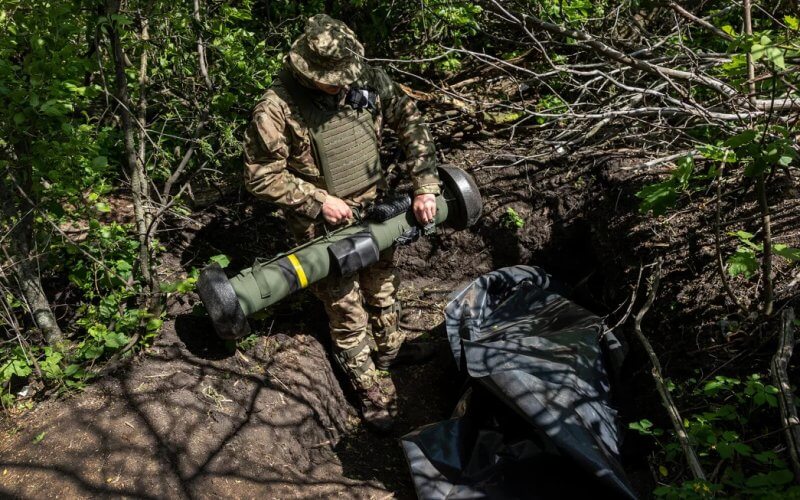By: Micaela Burrow, Daily Caller News Foundation
U.S. defense and diplomatic officials improperly tracked more than $1 billion in weapons provided to Ukraine as part of the Biden administration’s efforts to help the country defend itself against Russia’s invasion, raising questions about the U.S. ability to monitor aid, according to an inspector general report.
The investigation focused on how the Department of Defense (DOD) kept tabs on nearly 40,000 items, consideredsensitive and especially vulnerable to smuggling operations, according to The New York Times, which received a copy of the report. As of June 2, 2023, the U.S. had transferred to Ukraine at least $1.699 billion in items that by law qualify for enhanced end-use monitoring, DOD officials failed to compile full or timely inventories on 69% of the total value, the report, released in a redacted form Thursday, stated.
DOD’s inability to input items into government databases or confirm their location in a timely manner “may increase the risk of theft or diversion,” the report found.
“Achieving a complete picture of EEUM-designated defense articles in Ukraine will be difficult as the inventory continues to change, and accuracy and completeness will likely only become more difficult over time,” the report says.
The items under end-use monitoring (EEUM) requirements include relatively small items like Javelin anti-tank weapons, Stinger anti-aircraft weapons, one-way attack drones and night vision goggles, according to the report.
Figures depicting the total number of items are redacted in the public copy, but as of June, the U.S. had provided more than 10,000 Javelins, more than 2,5600 Stingers, 750 Switchblade suicide drones, 430 medium-range air-to-air missiles and 23,000 night vision devices, the NYT reported.
Lawmakers received a copy of the report Wednesday, according to the NYT.
The IG’s review didn’t determine whether arms dealers had actually stolen the weapons. “It was beyond the scope of our evaluation to determine whether there has been diversion of such assistance,” the report stated.
Since Russia’s full-scale invasion of Ukraine in Feb. 2022, officials in charge of monitoring the equipment as it passesthrough transport hubs in Poland to eventually reach Ukraine’s front lines have failed to meet a 90-day reporting requirement, the report found. That was mostly due to a lack of staff and travel restrictions within Ukraine, limiting how far U.S. officials could trace the equipment.
While tracking has improved with the introduction of handheld scanners and more robust procedures, those same challenges continued to limit monitoring through the end of the report’s investigation period.
In addition, the DOD did not have any policies in place for tracking EEUM items in areas with active hostilities, inserting some confusion and delays into the tracking process, according to the report.
Lawmakers in recent months have intensified pressures for increased oversight of weapons, equipment and humanitarian assistance devoted to Ukraine since the invasion. While the items encompassed in the watchdog report represent just a fraction of the nearly $45 billion in security aid the U.S. has committed and highlights the challenges of end-use monitoring in a warzone.
DOD did not dispute the finding of delayed or incomplete accounting in a response included in the report, but reiterated the ultimate objective of the program — to ensure relative confidence in a foreign partner’s ability to meet end use commitments — was being achieved.
“Real-time accuracy” in the database “is not practical under wartime conditions,” Alexandra Baker, acting undersecretary of defense for policy, wrote.










